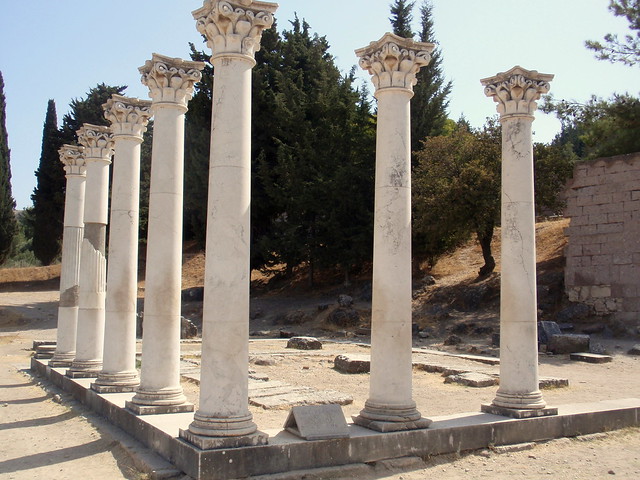
This lovely island of the Dodecanese group has been taken over almost completely by tourism, catering especially for family holidays. Aside from the draw of beautiful beaches, Kos has an abundance of interesting ruins to explore, and is easily reached from Rhodes or Bodrum (Turkey) by ferry. Kos was prominent in antiquity because of its healing temple of Asclepius, founded after the death of the famed physician Hippocrates, who allegedly taught students on the island.

Kos also features the remains of temples for other healing deities, including Isis and Sarapis, and appears to have historically been an island healing retreat. The island boasts a tree that is reputedly the oldest in Europe and Hippocrates is said to have held lecture sessions in its shade. It also has several archaeological remains of Persian, Turkish, Roman and Byzantine conquerors that all added their bit of splendour (and turmoil) during the island's long history. Kos has busy bars and an entertaining nightlife, and there are some pleasant towns and beaches outside the capital, but those looking for empty beaches should head for quieter islands. The main beach in Kos Town is narrow and pebbled, but nearby Tigaki is 6 miles (10km) of pure white sand. Lambi, Psalidi, and Agios Fokas are all popular beaches a short distance away.

Resorts
Attractions

Knights Castle
The Castle of the Knights of the Order of Saint John is situated at the entrance of Kos harbour and is an amazing place to visit. The sprawling ruins, some of which are extremely well-preserved, are located on what used to be an island and the bridge which once joined it to the mainland is still usable. Parts of the castle date back to the late 14th century but as it took over a hundred years to build there is evidence of more than one architectural style at the site. The castle has two defensive precincts: the interior has four circular corner towers and the larger exterior precinct has massive bastions in its four corners, battlements and gun ports. The two precincts are separated by a moat and joined by a drawbridge. There is a Hellenistic frieze over the main gate. A museum on the site, which is housed in a reconstructed building that was once the knights' warehouse, holds alters, sculptures and inscriptions from the site. The elevated sections of the castle afford visitors astounding views over the ocean. It is best to wear sensible walking shoes when visiting as exploring the castle thoroughly means traversing some steep steps and uneven ground.
Kos Archaeological Museum
Displaying mainly Hellenistic and Roman treasures found in and around Kos Town and dating from as far back as the 3rd century BC, the Archaeological Museum allows visitors a glimpse into the former glory enjoyed by this quaint port town. The museum is in Eleutherias Square and is housed in a two-storey neoclassical building which is itself a monument, dating back to 1935 and the Italian occupation. The museum's collection includes artefacts and archaeological findings from Kos and surrounds and even Rhodes and there are pieces on display from sites like ancient Asklepeion, the Altar of Dionysus, the Odeon and the Roman Residence. From original mosaics of Hippocrates, who taught here, to statues of Asklepieion, Artemis and Hygeia found north of Decumanus Maximus, a trip to the Archaeological Museum provides a good foundation of knowledge for visitors who plan to explore the surrounding sites. Many remarkable and valuable sculptures, mosaics and coins, among other things, are on display and the museum is well arranged and labelled. Regrettably, this wonderful museum has been closed recently for renovation and it is unclear when it is due to reopen. To avoid disappointment, check beforehand whether visitors are being admitted.
No comments:
Post a Comment